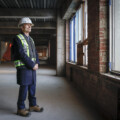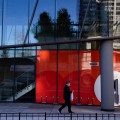It’s unlikely French philosopher and playwright Jean-Paul Sartre had airports in mind when he declared that, “Hell is other people.” But then again, he might have. Certainly, he could have. No question the French existentialist’s famous words are borne out by the experience of the sullen hordes tramping through airports around the world or here in Canada; especially here in Canada, as we enter the season of summer travel.
Indeed, other than the torture of air travel itself, airports – the beginning and end of every trip – seem designed to inflict maximum discomfort and dislocation for the traveller. It’s not just the hurry-up-and-wait checking-in process or the indignity of the largely performative security protocols. It’s not just the plastic furniture, or the unabashed retail rip-offs on offer at every turn. What lies at the heart of the horrid airport experience is its near total disconnection from reality. Neither here nor there, airports are all the same but different. They are everywhere, but nowhere.
Architects can’t be blamed entirely for the bloated non-places that modern airports have become, but they bear a major responsibility for the creation of these most liminal of spaces. Their job is to help create an environment based on a series of our assumptions about human behaviour; about who we are and what travellers want.
But are the architects right? Given the generally poor ratings users give airports, it seems not.
The most tedious part of a day at the airport is getting through security. This is the great leveller, where we strip down to go through a hazing process that clears us for entry into the inner sanctum. Though largely ineffective and often called “security theatre” , many experts try to convince us that being patted down, prodded and X-rayed actually prevents terrorism. The irony of airport security is that it — not terrorist attacks — is the greater test of the freedoms we take for granted in countries like Canada.
At the airport, we are guilty until proven innocent.
Recommended for You

Desmond Mills: Our cities are increasingly ugly—but they don’t have to be

Hunter Prize: Turning single homes into many—The case for multi-unit conversions in major Canadian cities

Hunter Prize: From red tape to red bricks—Fixing municipal finance to deliver more housing

Christopher Hume: Canada’s architects are building boring and bland cities




